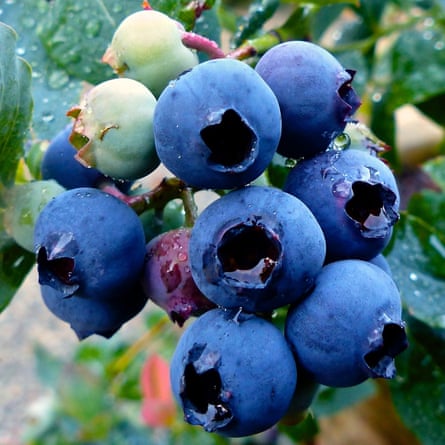Warmer UK weather adding to spread of fruit tree diseases | Plants
The UK’s fruit trees are under threat as a result of the climate crisis because plant diseases that thrive in warm weather are becoming more common.
Each year, the Royal Horticultural Society (RHS) compiles a list of the most common plant diseases identified by its almost half a million members. Gardeners take pictures or samples of afflicted trees, crops or flowers and send them in to the plant pathologists, who can identify the disease.
This year, seven of 2022’s 10 most prevalent garden diseases relate to fruit, which the RHS says is the highest it has seen. Apple and pear canker also entered the top 10 for the first time in recent years.
Dr Liz Beal, a plant pathologist at the RHS, said: “This is a direct result of last year’s extreme summer heat, which caused many plants to become stressed and therefore more susceptible to problems when rain, coupled with continuing mild temperatures in the autumn, provided the perfect breeding ground for diseases to spread. Spores of most fungi need warm, wet weather to spread and infect plants.”
While many of these diseases simply cause fruit to rot or give an unsightly appearance, others can be deadly. Particularly worrying is a rise in silverleaf, which can destroy blossoming cherry trees.
She explained: “With warm weather predicted again this year, gardeners can act now to minimise the risks by pruning apples and pear that are still dormant and avoiding pruning Prunus – flowering cherry – until the summer. This is as Prunus is susceptible to silver leaf and the fungi is less active during the summer months.”
Horticulturalists are keeping a keen eye out for new diseases and invasive species, as warming weather combined with the international plant trade means that it is becoming more likely the UK will experience new outbreaks.

Dr Beal said that she is concerned about blueberry rust becoming more prevalent, as people grow the “superfood” at home.
She said: “With gardeners keen to dabble with ever more exotic fruit and vegetables it is likely that we could see more blueberry growers, well regarded as a super food and boasting spring flowers and autumn colour, succumbing to a new rust already prevalent in many parts of the world. People should take care to purchase blueberry plants from reputable suppliers and monitor plants for signs of the rust – yellow – orange pustules on underside of leaves.”
As well as climate impacts, establishing orchards has become an increasingly popular gardening pastime, as they have biodiversity benefits and produce delicious fruit.
Dr Beal explained: “Another factor in the prevalence of these diseases is the growing popularity of fruit tree planting, particularly heritage varieties that may be less resistant to the likes of apple and pear scab, apple canker and apple powdery mildew. This doesn’t mean that people shouldn’t grow them but that they should take additional plant health precautions such as ensuring the tree is planted in the right place, for example in well-drained soil, prune correctly in the winter months to remove issues early and clear fallen fruit that shows evidence of rot to minimise the chances of spores harbouring at the foot of the tree.”
The top plant diseases of 2022
1 Honey fungus
after newsletter promotion
2 Phytophthora root rots
3 Powdery mildew of prunus
4 Rose black spot
5 Peach leaf curl
6 Brown rot of fruit
7 Silver leaf
8 Apple and pear scab
9 (equal) Pear rust, and apple and pear canker.
